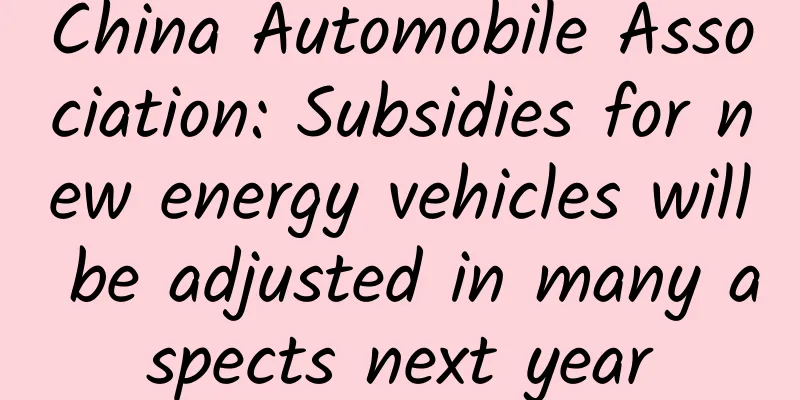When will 5G come? 2019 CES will be dominated by 5G!

|
There is an old question in English, "What is omnipresent?" For this year's CES2018, the answer is 5G. Yes, it is the most important communication protocol that has just been approved and will become the standard for future mobile devices. Before the CES2018 exhibition began, many manufacturers said that 5G would affect all their product announcements. We believe that major US operators and global hardware manufacturers will have something to say about 5G in their press conferences. However, apart from some small demonstrations, 5G technology will not be presented too much at the booth.
At today's panel discussion titled "Mobile Innovation: How 5G Opens the Future," all parties gave reasons: Although the 5G standard has finally taken shape, the 5G standard has undergone a series of successful tests, and two of the four major operators in the United States have announced 5G deployment plans in 2018, the overall hardware preparation is not yet complete. But it will be completed soon. Here is some information about 5G that will be available soon. What is 5GThe fifth generation of cellular technology (5G) can ideally increase current data link speeds by 10 or even 100 times, reduce response delays to an “imperceptible” level, improve security performance, and fundamentally increase the size of each network. With higher-bandwidth radio signals, multiple antennas and faster processors, 5G is expected to achieve near-broadband wireless communications. At a Samsung media briefing earlier this week, CEO Tim Baxter said 5G will "put fiber in your pocket." 5G's applications will extend far beyond mobile devices. How widespread will 5G be?If you believe what AT&T, Qualcomm, Samsung, T-Mobile, and Verizon say, 5G wireless networks will affect everything, including devices and areas that have rarely been exposed to cellular technology in the past. During a CES panel discussion, Qualcomm's Cristiano Amon said, "With 5G technology, everything will become wireless, not just mobile, but basically everything will be wireless." Verizon's Hans Vestberg said 5G "will bring changes to industry and society in a more profound sense." How will 5G do this?
It is easy to predict everything, but will they behave as predicted? The panel discussion suggested that 5G will be adopted faster than 4G because a large number of users are already accustomed to Internet services. At the same time, 5G is likely to bring about social changes. At the CES discussion, Qualcomm's Amon mentioned the changes that 4G smartphones have brought to the banking industry: Today, the average person conducts more banking transactions on their mobile phones than at branches. 5G will make people look forward to more such changes. Baidu COO Lu Qi said at the forum that 5G will bring huge changes to the video business and will gradually "replace a lot of language communication." He also expects that communicative AI, autonomous vehicles, and future urban infrastructure design will benefit greatly from 5G. What is the difference between fixed 5G and mobile 5G?The difference between fixed 5G (dedicated 5G in homes, offices, and schools) and mobile 5G is that users can enjoy mobile 5G services in different areas. T-Mobile claims that AT&T and Verizon are mainly committed to providing fixed 5G services. According to T-Mobile, fixed 5G services are easier to install and use, while mobile 5G services still have some technical problems to overcome. AT&T refuted this claim and announced that it would provide mobile 5G services in 12 different markets in 2018. During the panel discussion, Verizon's Hans Vestberg seemed to confirm T-Mobile's conjecture, saying that the 5G services provided by Verizon in 3-5 markets in 2018 will mainly provide user broadband services through pre-standard 5G hardware, so that the company can invest more energy in 5G-related technology and network development. However, despite the initial small scope of supply, Vestberg said: "Verizon will be the first and the most important one" Some key 5G technologies5G applications require new technologies and updates to existing technologies. The following are some key technologies. Radio waves and radio equipmentYour cell phone radio is called "cellular radio" because cellular technology relies on the reception and transmission of radio waves. The distance of your device from the cell tower (the tower that broadcasts the radio to the internet) will determine how much power your phone uses to interact with the tower. Just like when 4G replaced 3G and 3G replaced 2G, operators will install new 5G interaction equipment on signal towers to allow model interaction on this frequency. Qualcomm provides an "adjustable" radio wave solution to make interaction between radio frequencies, broadband and narrowband possible, so as to be compatible with the transition period from 4G to 5G. New radio chips and signal transmitters in mobile phones are also necessary equipment. Millimeter wave broadcastingYou may have seen the term millimeter wave on airport security equipment, which is used in backscatter X-ray scanners. Perhaps this has caused some people to worry about whether widespread 5G wireless services will lead to radiation. But it is important to note that they are different technologies. Studies have shown that millimeter waves have no effect on organic tissue. At the same time, our existing radio bands have no effect on organic tissue. 5G uses millimeter waves because they are particularly good at large-scale data transmission (1-5GB/S speed) at 300-600 meters with low energy consumption, and the millimeter wave spectrum is open all over the world. However, millimeter waves have limited ability to penetrate buildings and can generally only reach devices within the visual range. Even rain can affect its transmission. Although Verizon's Vestberg said that the propagation test of millimeter waves in line of sight and semi-line of sight "is much better than we expected." 5G operators still have a long way to go. Multi-frequency supportLow, medium, and high frequency radio waves will be used for 5G data transmission. Low frequency (around 600mHz) waves can easily penetrate buildings and provide bandwidth support for medium frequency waves (around 1900mHz). Although high frequency waves (60000mHz) cannot penetrate buildings or objects, they can provide long-distance communication services. Medium frequency waves are the main interaction frequency of current cellular devices, and low and high frequencies will support them. T-Mobile has purchased a large amount of low-frequency spectrum across the United States, promising to provide 5G communications services from the East Coast to the West Coast. At the same time, it acknowledged that 5G will likely require three tiers of spectrum: low, medium, and high. During the panel discussion, Qualcomm's Amon also expressed his recognition of this view, saying that "high band", "low-6 band", and "resetting of existing (medium) bands" will be needed to support 5G communications. Amon said: "5G is not about choosing millimeter wave or choosing a (low-frequency) band. Instead, all bands work together. 5G has Gigabit LET as the foundation to achieve a denser millimeter wave communication. A large number of Gigabits will work together in one system." What is the obstacle?Operators in the United States are eager to provide their own 5G services in the United States, but the hardware is not yet fully ready. According to Qualcomm's Amon, more than 40 companies have come together to accelerate the standardization of 5G, and "the approval of the 3GPP agreement at the end of last year is a great achievement." 3GPP is the first 5G communication protocol. However, despite the industry's efforts, there are currently no finalized chips or devices. Amon said that he expects that he will "show Snapdragon 5G phones in a 5G network environment" at CES2019 in a year, suggesting that Qualcomm will not release mobile 5G products in 2018. Today, companies can build prototypes, chips, and antennas on prototype networks. But the chips and antennas won’t be finalized until the 5G standards are finalized. Consumers won’t get access to 5G until these products can be mass-produced. This development-release cycle is expected to take at least 1-2 years, depending on the product. Testing of fixed and mobile 5G has been going on for some time. Baidu's Lu Qi said that the testing work, which is mostly being done in the United States now, will spread to China and other parts of the world in 2018. US operators generally say that 2018 will be the year of "the road to 5G", including fast LTE systems, advanced data and massive MIMO antenna arrays will be set up before 5G is finally available. Verizon's Vestberg said that in 2018, the 5G ecosystem will be developed and various products will be tested here. It is worth noting that although South Korea is very aggressive in 4G deployment, it has been slow to start 5G deployment. European news may not be released until next month at the Mobile World Congress in Barcelona at the earliest. So when will 5G come?Although AT&T said before CES that it would offer more than a dozen mobile 5G services in 2018, and Verizon promised to get their fixed 5G deployments out before AT&T, the panelists did not expect 5G to be widely deployed before 2019 or 2020. Qualcomm's Amon said that "flagship smartphones" that are available in early 2019 will be the first devices that can communicate with 5G. So T-Mobile's promise to deploy in early 2019 and fully launch 5G services by 2020 is still very pragmatic. In other words, look forward to CES 2019, when 5G will shine. This year's work is mainly about laying the foundation. |
<<: Don't want to stop using iCloud? Why not migrate your data to another Apple ID?
>>: Python library that can complete Android UI automation
Recommend
The first pig kidney transplant to a human being is a big step forward in xenotransplantation
Recently, a major breakthrough has been made in x...
Business Analysis Skills Course
Course Features 1. Aiming to "solve various ...
How to enable showcase permissions on Douyin? What are the qualifications for opening a window display on Douyin?
What are the requirements for opening a product s...
Industry and academia work together to build a better future - Honda successfully held a lecture on automobile styling design and drawing
On April 14 and 15, the 2018 Honda Industry-Unive...
How to establish a complete user growth system?
The Internet has entered the second half of its e...
Event planning and promotion丨A universal event planning solution!
There is actually no shortcut to planning an even...
“Heating food in a microwave oven can produce carcinogens”, is this true?
As a small household appliance that almost every ...
What exactly is this high-end “brand tone”?
At the last meeting, the boss brought up the conc...
How difficult is it to produce the blue fireworks in the TV series "Nothing But Thirty"?
In the TV series “Nothing But Thirty”, “blue fire...
What is the principle of machine flash ASO? Understand how to do ASO on a machine in one article!
1. What is ASO ? It mainly uses machines and a se...
State determines view - thinking about front-end development based on state
In today's front-end community, concepts such...
Zhongshan WeChat temporary flash sale mini program, how to develop a free flash sale mini program?
The editor of Jimifeng Technology recently survey...
Are you always getting electrocuted in winter? Here are some easy tips to help you avoid static electricity!
Winter is coming Do you often experience sudden &...
Want to take a selfie on Mars? Unless you have the same selfie gadget as the Tianwen-1 rover
On May 15, 2021, the Tianwen-1 probe successfully...
Henan big data center cabinet rental price, Henan server rental
Henan big data center cabinet rental price, Henan...









